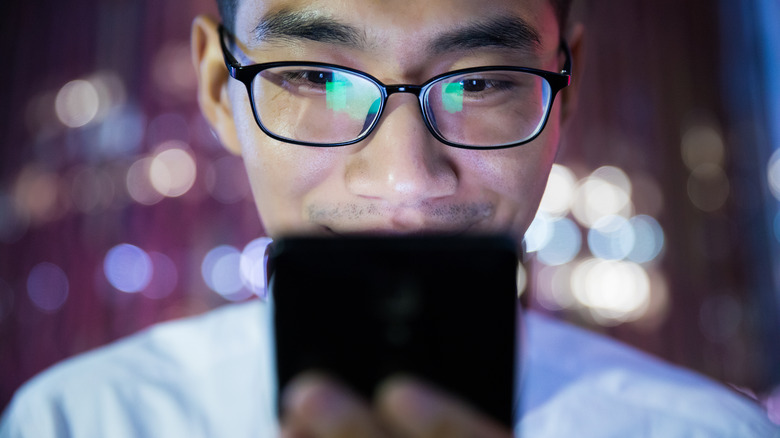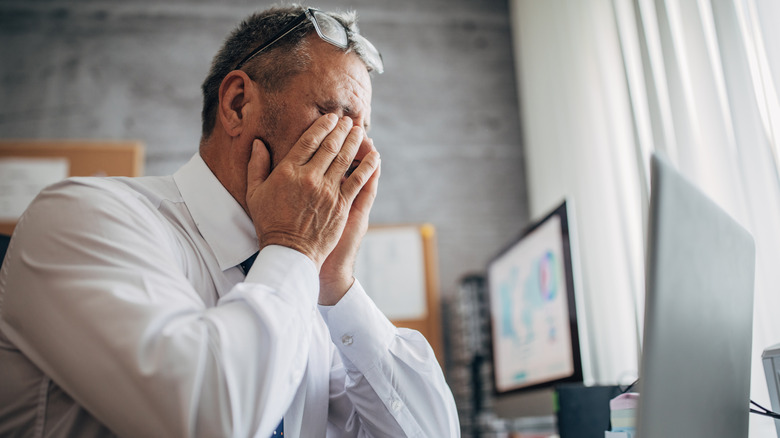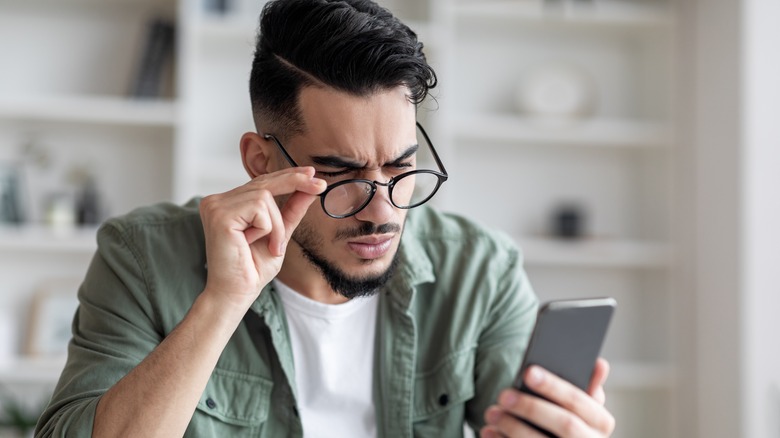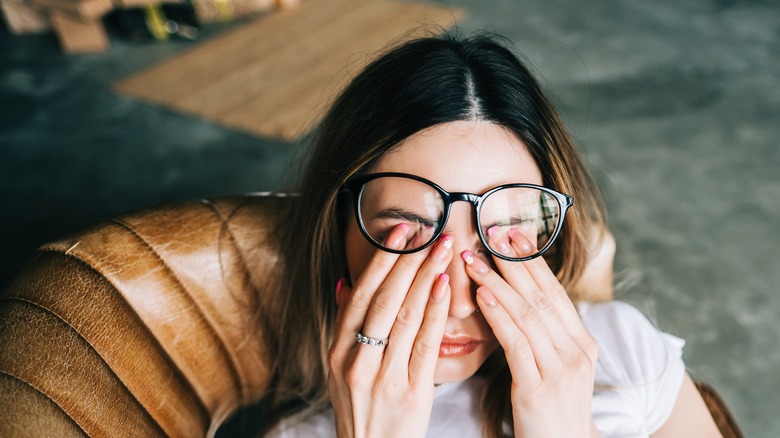Are Bigger Phone Screens Better Or Worse For Your Eyes? Here's What The Research Says
A wealth of medical literature links the impact of staring at screens with eye discomfort and how it spills over into other areas, such as sleep disturbance. But it's not just the hours we spend looking at a screen and how close we are to the display, but also the screen size that can magnify the harmful effects. To be more specific, looking at a smartphone's relatively small screen for a prolonged spell can be more discomforting compared to a larger panel like that of a tablet or PC.
According to a study published in the BMC Ophthalmology journal, "the smaller the display size, the greater the adverse impact on eyes." The team recruited test subjects with no history of eye-related medical issues or surgeries as part of the study. Whatever refractive discrepancies were spotted, they were duly fixed using contact lenses and glasses to ensure the test subjects had the most natural viewing experience without any difficulties at short or long range.
The participants then watched YouTube videos on the 6.1-inch panel of an iPhone XR and the 9.7-inch screen of an iPad for an hour, an experiment that continued for over a week. Following a range of tests, the research team found that participants felt more fatigue and experienced ocular discomfort more quickly when they watched videos on a phone's screen than on a tablet.
What's at play here?
"These results may be because excessive accommodative convergence is necessary to form a clear image and the small size of the screen and displayed font induce visual fatigue," the team concluded after measuring the near-point accommodation (NPA) and near-point convergence (NPC). It was observed that enhancing near-field working hours with smartphones leads to excessive accommodation, resulting in quicker arrival of eye fatigue.
Previous research has shown that close-range screen exposure can generate accommodative spasms and constrictions in the iris region and the ciliary muscle, which can decrease ocular functions over time. However, the latest research is held back by a few aspects, such as a very small pool of test subjects and using a low-effort video-watching activity as the assessment task instead of something more variable, such as playing video games or reading a book.
Another issue is that it doesn't consider the different usage patterns from person to person. Some use tablets on a stretch for binge-watching videos, others do it on a phone, while many have screen time far lower than an average smartphone user. It did manage to use scientific measurement techniques to assess the impact on the eyes in the immediate aftermath of screen activity and establish a direct link between screen size and ocular fatigue.
Staring at screens is problematic
The study above covers smartphones and tablets, but larger screens are not particularly forgiving either. According to research by experts at Thailand's Walailak University, working with a large screen, such as a computer, for more than two hours can lead to eye strain. This is caused by slower visual acuity adjustment resulting from prolonged or frequent contraction of the eye muscles. It can also be caused by a decrease in blink rate, leading to dryness of the eye and visual fatigue.
This study tried to understand if a larger monitor (23-inch) could have a more adverse impact than a smaller PC screen (18.5-inch). However, it couldn't derive any concrete results to ascertain the harmful effects and their direct link to screen size variation. Another crucial factor here is the external environment. Staring at a screen in dark or poorly lit surroundings has a stronger impact on the blink rate, eye strain, and fatigue.
There is some debate over the long-term impact of using screens in such a setting, but experts suggest that users should blink or use drops to be on the safe side. Of course, vision deterioration happens with age, and a person faces difficulty discerning between colors, especially in poorly lit surroundings. But precautions in adulthood are strongly advised, lest they exacerbate the existing vision issues and speed up more serious challenges in years ahead.
How to guard your eyes from screens?
When it comes to screen exposure, the most important aspect is prolonged gazing. As mentioned above, keeping the eyes moisturized and avoiding dryness is important. According to Professor Eden Akpek at Johns Hopkins Medicine, dryness can lead to eye surface inflammation. So, what's the recourse? As per the American Academy of Ophthalmology, the 20-20-20 formula is a good start. It recommends that you shift your gaze every 20 minutes and focus on an object at least 20 feet away for a minimum of 20 seconds.
This practice helps reduce eye strain and promotes better eye health because looking at other objects requires focus adjustment and muscle movement, reducing the onset of stress and fatigue. Other helpful steps include adjusting the screen brightness so there isn't much difference between the display and external brightness levels. This strategy helps reduce eye strain. A matte screen filter or a blue-light protection layer like a lens or glasses can also be helpful. However, the latter's efficacy has been challenged lately.
Some experts also suggest artificial tears to lubricate the eyes and avoid dryness. These are available without a prescription, but lubricating ointment or gel is the preferred route in severe cases of dryness. Regular eye checkups and consultations are also advised if you experience vision issues and other screen exposure-linked problems like headaches and sleep disruptions.



